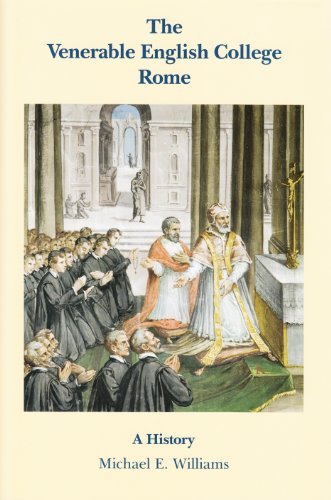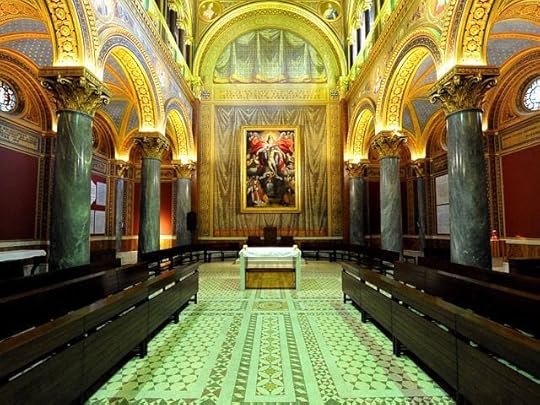John Seton & Nicholas Morton
 On the wall of the Venerable English College (the seminary for England and Wales) chapel in Rome, close to the altar, is a memorial to "the Reverend Nicholas Morton (died after 1586), priest, Englishman and celebrated doctor of sacred theology". The inscription proclaims that it was "his wish to be buried in the same tomb with the Reverend John Seton (c.1498 - July 20, 1567) with whom he fled from England for the same cause, that of religion, and who came to Rome at the same time". The two priests died twenty years apart, but Morton's love and determination on joint burial had survived the interval.
On the wall of the Venerable English College (the seminary for England and Wales) chapel in Rome, close to the altar, is a memorial to "the Reverend Nicholas Morton (died after 1586), priest, Englishman and celebrated doctor of sacred theology". The inscription proclaims that it was "his wish to be buried in the same tomb with the Reverend John Seton (c.1498 - July 20, 1567) with whom he fled from England for the same cause, that of religion, and who came to Rome at the same time". The two priests died twenty years apart, but Morton's love and determination on joint burial had survived the interval.John Seton D.D. (c.1498–1567) was an English Roman Catholic priest, known as the author of a standard logic text.
Born in or about 1498, Seton was educated at St John's College, Cambridge, where he graduated B.A. in 1528. Soon afterwards he was elected a fellow of St. John's, and graduated M.A. in 1532, B.D. in 1541.
Seton taught philosophy in his college, and gained a reputation as a tutor. He belonged to the "conservative humanist" group associated to St John's, a college sharply divided by the Protestant Reformation, with others of similar views including John Christopherson and Thomas Watson. He was also a good friend, however, of Roger Ascham who was one of the reformers there.
After being ordained priest, Seton became one of Bishop John Fisher's chaplains, and attended him the Tower of London. In 1542 he was one of the fellows of St John's who signed an appeal to the Visitor against John Taylor, the Master. In 1544 he proceeded D.D., and about that time was appointed one of the chaplains to Stephen Gardiner, at that time bishop of Winchester and chancellor of the university, who collated him to the rectory of Hinton, Hampshire; at Gardiner's trial in 1551 Seton gave testimony in his favour.

On the wall of the Venerable English College chapel in Rome, close to the altar, is a memorial to "the Reverend Nicholas Morton, priest, Englishman and celebrated doctor of sacred theology". The inscription proclaims that it was "his wish to be buried in the same tomb with the Reverend John Seton with whom he fled from England for the same cause, that of religion, and who came to Rome at the same time". The two priests died twenty years apart, but Morton's love and determination on joint burial had survived the interval.
( Read more... )
Source: en.wikipedia.org/wiki/John_Seton_%28priest%29
( Further Readings )
 comments
comments
Published on July 20, 2015 12:37
No comments have been added yet.



